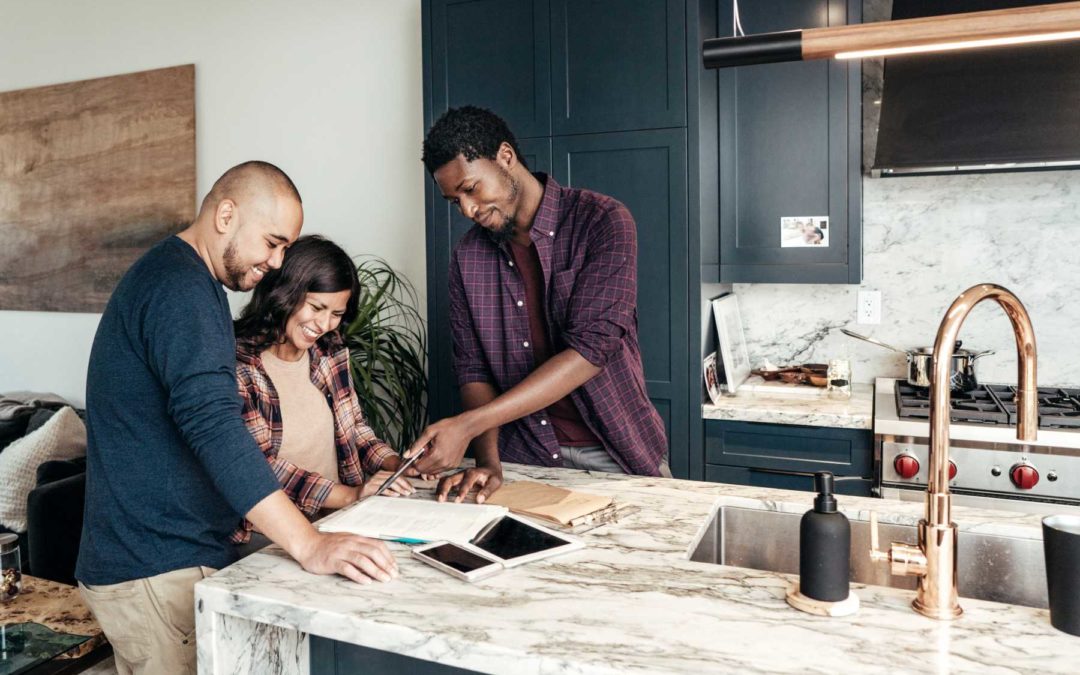Finding your perfect next home can be a long and frustrating process. So when you’ve finally come across a home you love at first sight, it’s tempting to rush onward with the buying process. But to avoid future heartache, it’s important to take a close look at the property and decide whether it really is the home for you. And it’s best to do this right at the start, before you become too committed emotionally and financially. Here’s what to do.
1) Walk Through the Entire Property
Walk through every room in the property, examining each one with a critical eye for detail. Keep a record of what you find, either using a notebook, or by using your smartphone to record you as you talk. This is important. It’s easy to forget about minor problems soon after you see them, although they could later give you serious misgivings when considered together.
What do you like about each room? What do you dislike? Realistically, will you need to renovate throughout soon after moving in, or can you live with the current condition and refurbish it a little at a time?
2) Check the Floors
In each room, check the condition of the flooring. Any problems here could be expensive to fix, so you need to take careful note. If there are carpets, are they in good, clean condition? Is any exposed hardwood straight and true? Are there any loose floorboards or signs of warping? Any flooring issues don’t necessarily need to stop you buying the property, but you need to account for them when deciding how much you’re willing to pay..
3) Look for Water Damage
In each room, check the ceilings, windows, doorways, and corners for any signs of water including drip stains, mold, or damp. Even the slightest sign should be a cause for concern, as fixing a damp or leaky home can be a long and expensive battle. If any water stains you spot look old rather than fresh, ask exactly what’s been done since they formed to prevent the issue recurring.
4) Check the Lights
In each room, turn on and off every light fixture. If there’s a problem, ask for an explanation. While a single blown light bulb is nothing to worry about, multiple blown bulbs or a full fixture that’s not working could be a sign of more serious electrical issues.
5) Check Doors and Windows
Open and close all the doors as you walk around the home. If any stick or won’t close properly, then it could simply be a warped door which is irritating but not too serious. However, if several doors have problems, there could be a deeper structural issue that needs investigating. If the weather allows, do the same for all the windows too. And while you’re checking, look for signs of damp or rot at the base of each pane of glass.
6) Check Out the Heating
Make sure you locate the heating system, whether it’s a basement furnace, a hot water heater, or otherwise. Check the main system for a service sticker, which will give you an idea of how long it has been installed and how energy efficient it is.
If the heating system looks old or is in any state of disrepair, ask for a formal service history before going any further. Replacing these items is expensive and disruptive, and you need to know exactly where you stand before committing to a purchase.
7) Check the Water
Next, check that all the faucets work in the kitchen, bathroom, and anywhere else they’re installed. Make sure they’re free from drips, and that the water runs clean without any obvious pollution. Also check that the toilets flush correctly, and that there are no signs of leakage around them or the sinks, tubs, and showers.
8) Domestic Appliances and Fittings
Ask which kitchen or bathroom appliances and fittings will be left behind. Are they in good enough condition to be useful to you? If not, make sure that they’ll be removed as part of the deal. They’re not your responsibility, and you don’t need the extra hassle when moving in. If you’re happy to keep whatever’s being left, make sure the appliances are working well, turning them on to check if necessary.
9) Check the Exterior
Walk around as much of the exterior of the property as you can, even if it’s just a balcony or terrace. Check for any obvious problems such as cracking in the window frames, which could be caused by foundation shifts. Any cracks or splits in the main structure should be a highly worrying sign, and so should any signs of damp or water damage that can’t be explained by ordinary weather.
Buying a home is a major step and it needs to be taken carefully. While any serious problems should show up in the home inspection or appraisal, at this point you may have become invested in the property and canceling your interest can be upsetting. Follow these nine tips and you should uncover most major problems right at the start, so you can back out as painlessly as possible.


Recent Comments